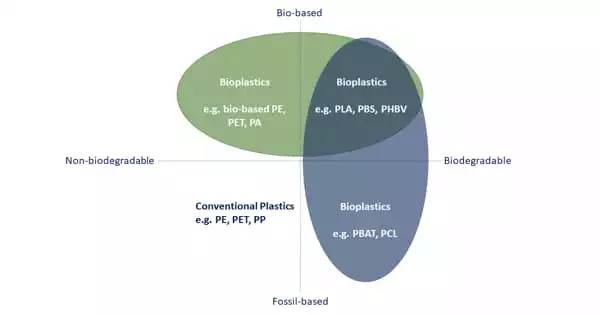Many bats echolocate, which means they generate high-pitched squeaks that bounce off their surroundings and allow them to navigate in the dark and find insects to eat. But until today, scientists didn’t know much about how bats developed their sonar talents.
The world’s first study to compare the inner ear anatomy of the two main genera of bats is published in Nature. The researchers were able to prove that the existence of additional neurons and specialized ear structures match with a split in bat evolution shown by DNA by analyzing the small inner ears of bats from 19 of the 21 known bat families.
“This is the first physical evidence we have to support what genetic data tell us about the split of bats into two major groups,” says Bruce Patterson, the Field Museum’s MacArthur Curator of Mammals and one of the study’s authors. “It represents the greatest structural innovation in mammalian ears since the Jurassic, and it helps solve the mystery of how bats evolved the echolocating abilities we see today.”
“Biologists have always speculated that two major groups of bats have different ways of seeing the world through sound,” says the study’s lead author Benjamin Sulser, a Ph.D. student at the American Museum of Natural History and graduate of the University of Chicago, where he worked with Patterson and UChicago Professor of Organismal Biology and Anatomy Zhe-Xi Luo. “This is the first time we found different neuroanatomies in the inner ear, which give these bats different ways of processing the echolocating signal.”
For a long time, scientists split bats into two groups: Megachiroptera, which are large fruit bats that rely on vision, and Microchiroptera, which use echolocation to find insects. Because certain little echolocating bats were more closely linked to giant fruit bats than to their fellow echolocaters, genetic research in the last several decades revealed that this categorization needed to be updated.
As a result, scientists developed a new way to classify bats based on how closely they are connected to one another. Yinpterochiroptera and Yangochiroptera, the yin and yang of bats, have been separated since then.
“It’s become clear that genetic analysis is the best way for us to reconstruct the evolutionary history of these bats, but we had such a clear genetic signal that there were two groups, we thought there had to be some physical traits that aligned with this striking genetic split,” says Patterson.
Not all yin bats echolocate, but the ones that do use a constant wavelength frequency, and they make a lot of these calls about a third of the time, they’re actively emitting sounds in hopes of something bouncing back, whereas Yangochiroptera will emit a signal and be silent for a long period of time, but the sounds they make vary in pitch and frequency.
Bruce Patterson
The researchers set out to find physical characteristics that distinguished the yin bats from the yang bats. The echolocation techniques used by bats provided one hint. “Yin and yang bats echolocate differently,” explains Patterson.
“Not all yin bats echolocate, but the ones that do use a constant wavelength frequency, and they make a lot of these calls about a third of the time, they’re actively emitting sounds in hopes of something bouncing back,” says Patterson, “whereas Yangochiroptera will emit a signal and be silent for a long period of time, but the sounds they make vary in pitch and frequency.”
The bats’ inner ears were the first stop for the researchers because they are the organ that handles the echolocation data. The researchers CT scanned 31 bat skulls from the Field Museum’s collection, as well as a few from New York’s American Museum of Natural History. The bats came from 19 of the 21 recognized bat families, representing 39 different species.
The cochlea, a tiny organ in the inner ear responsible for hearing, was roughly the size of a poppy seed in most of the bat skulls examined by the scientists. The crucial anatomical distinctions between yin and yang bats were hidden deep inside this tiny poppy seed-sized hole.
All mammals, including bats, have microscopic hairs deep inside their cochlea that allow them to hear. When sound waves vibrate these hairs, swirling masses of nerve cells attached to them take up the signal and convert it into an electrical impulse that is sent to the brain.
The small structures in the bats’ brains exhibited enormous disparities in CT scans. The spiral nerve cells in the yin bats’ ears were protected by a thick bone canal wall packed with nerve endings, similar to ours.
The yang bats, on the other hand, lacked the protecting bone tube and possessed additional neurons for processing sound waves. The nerve cells can grow into increasingly complicated shapes thanks to the extra space provided by the absent canal walls.
“All mammals going back to the mid-Jurassic have these bony canal walls, but yang bats are missing them,” says Patterson. “The evolution of yang bats without this canal is the greatest structural innovation in all mammalian ears that we’ve ever seen.”
“We hypothesize that by developing this new configuration, without the space constraint on the inner ear ganglion, the yang bats have a greater capacity for the ganglion cells to multiply and different ways to connect to the brain, unlike most other mammals,” says Luo.
“A greater size of the ganglion and a greater number of neurons may have contributed to this big evolutionary diversification of bats relying more on frequency modulating echolocation.”
The concept could explain why yang bats have so many more species than yin bats: their ability to create more specialized inner ears could allow them to access a greater range of habitats and prey.
According to Patterson, the work is significant because it adds to our knowledge of how bats evolved into such a diverse population.
“In the 52 million years since the earliest known bats lived, they’ve exploded into one of the most successful mammals on Earth. Twenty percent of mammal species are bats, and they’re crucial for our planet and for human activities like agriculture, since they eat so many pest insects.” says Patterson. “This study helps explain how they were able to diversify so much and so rapidly.”
















